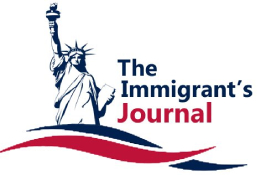By: Janet Howard
Protecting Victims, Parental Duties, and Legal Rights
Incest is one of the most damaging forms of abuse, leaving deep emotional, psychological, and often physical scars on its victims. This complex issue carries profound legal and moral implications—not only for the perpetrator but also for the non-offending parent, who has a duty to protect the child. Understanding the rights of child victims, recognizing the different types of incest, identifying warning signs, and navigating accusations are essential steps in addressing and preventing this form of abuse. Equally important is exploring pathways to healing and recovery, helping survivors reclaim safety, dignity, and hope.
Its secrecy is maintained by family silence, fear of exposure, and a desire to protect reputations, even at the expense of a child’s safety. That silence protects the abuser, not the victim. Breaking it is the first step toward justice and healing.
Types of Incest
While all incest is abusive, it can take different forms:
1. Parent–Child Incest – The most common and destructive form. Often involves grooming, intimidation, or threats to ensure compliance and silence.
2. Sibling Incest – May involve older siblings abusing younger ones, often in situations with age or power imbalances.
3. Extended Family Incest – Includes abuse by uncles, aunts, cousins, grandparents, or other relatives with access to the child.
4. Familial Grooming for Outsiders – In some cases, a family member grooms a child for abuse by another family member or family friend.
The Rights of Child Victims
Every child has fundamental legal rights to protection, care, and justice. These include:
– Right to Safety – Immediate removal from an abusive environment once credible suspicion is established.
– Right to Confidentiality – Protection of the child’s identity during legal proceedings.
– Right to Medical and Mental Health Care – Access to doctors, therapists, and trauma recovery programs.
– Right to Advocacy – Victim advocates help children navigate court and child welfare systems.
– Right to Justice – The opportunity to be heard in court, through in-person testimony or recorded statements, in an age-appropriate and trauma-sensitive manner.
The Responsibility of the Non-Offending (“Innocent”) Parent
When one parent is the abuser, the non-offending parent’s role is critical. They are often the child’s only line of defense. Their responsibilities include:
1. Immediate Protection – Remove the child from the abuser’s presence immediately and seek protective orders.
2. Mandatory Reporting – Most states require certain individuals, including parents, to report suspected abuse.
3. Cooperation with Authorities – Work with police, prosecutors, and child protective services.
4. Ensuring Emotional and Medical Care – Secure therapy and medical care.
5. Preventing Retaliation – Protect the child from pressure to remain silent or recant.
Do Innocent Parents Have Rights?
Yes—but those rights are balanced by the duty to protect the child. Non-offending parents have the right to:
– Seek Full Custody – To keep the child away from the abuser.
– Access Legal Support – For custody and protective order cases.
– Participate in Hearings – Advocate for the child’s best interests.
– Access Counseling – For their own emotional wellbeing.
Effects of Childhood Incest
The trauma from incest has far-reaching consequences:
– Psychological Harm – Depression, anxiety, PTSD.
– Attachment and Trust Issues – Difficulty forming healthy relationships.
– Behavioral Changes – Withdrawal, aggression.
– Physical Health Consequences – Injuries, chronic illness.
– Long-Term Impacts – Higher risk of substance abuse, homelessness.
Warning Signs and Suspicion of Incest
Warning signs include sudden fear of a specific family member, sexualized behavior inappropriate for age, regression, unexplained injuries, declining school performance, and withdrawal from social activities.
What to Do If You Suspect Incest
- Document Everything – Record observations and statements.
2. Do Not Confront the Abuser – Could endanger the child.
3. Contact Authorities – Call child protective services or police.
4. Seek a Forensic Medical Exam – At a child advocacy center.
5. Get Legal Help – Protect rights and safety.
Accusations of Incest: The Legal Process
When accusations are made:
– Emergency Protective Measures – No-contact orders.
– Child Forensic Interview – For legal testimony.
– Criminal Investigation – Possible felony charges.
– Family Court Hearings – Custody and visitation decisions.
– Support Services – Counseling and relocation.
Balancing Fear and Shame After Incest Abuse
Fear and shame often silence victims. Survivors and families may struggle with fear of retaliation, stigma, family pressure, and self-blame.
Breaking this cycle requires public awareness, survivor support networks, and therapeutic intervention.
Conclusion
Incest is a crime of betrayal, secrecy, and silence. The non-offending parent’s responsibility is to act, protect, and advocate. Children have the right to safety, justice, and healing. By breaking the silence and seeking legal recourse, families can begin the path to recovery.
Resources
– National Sexual Assault Hotline (RAINN) – 1-800-656-4673 | www.rainn.org
– Childhelp National Child Abuse Hotline – 1-800-422-4453 | www.childhelp.org
– U.S. Child Welfare Information Gateway – childwelfare.gov

